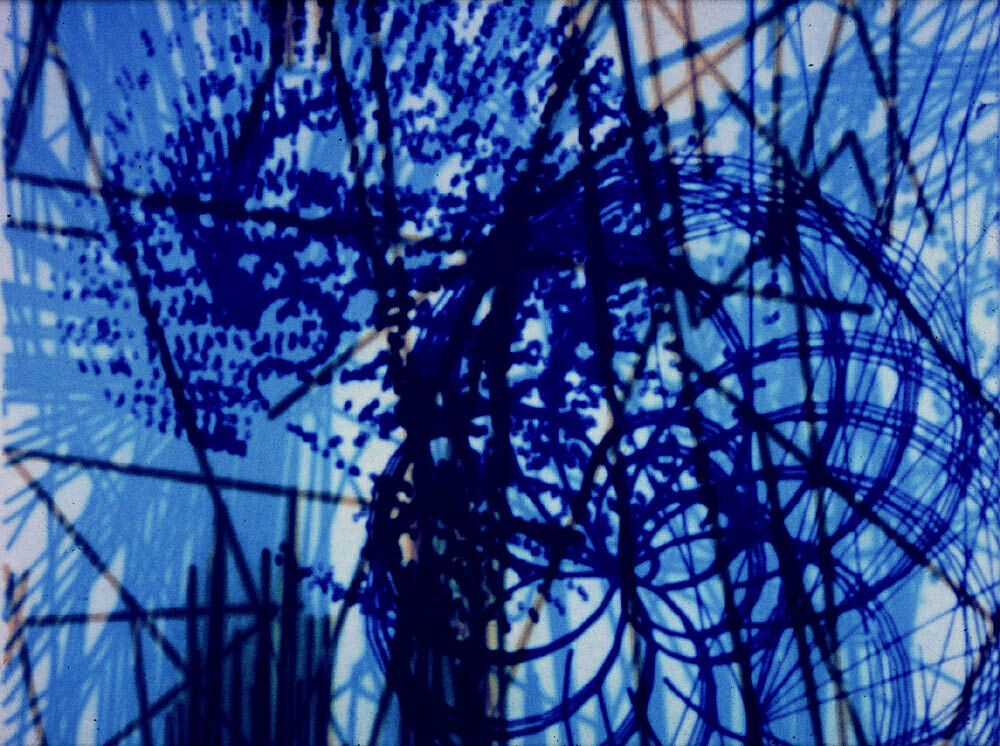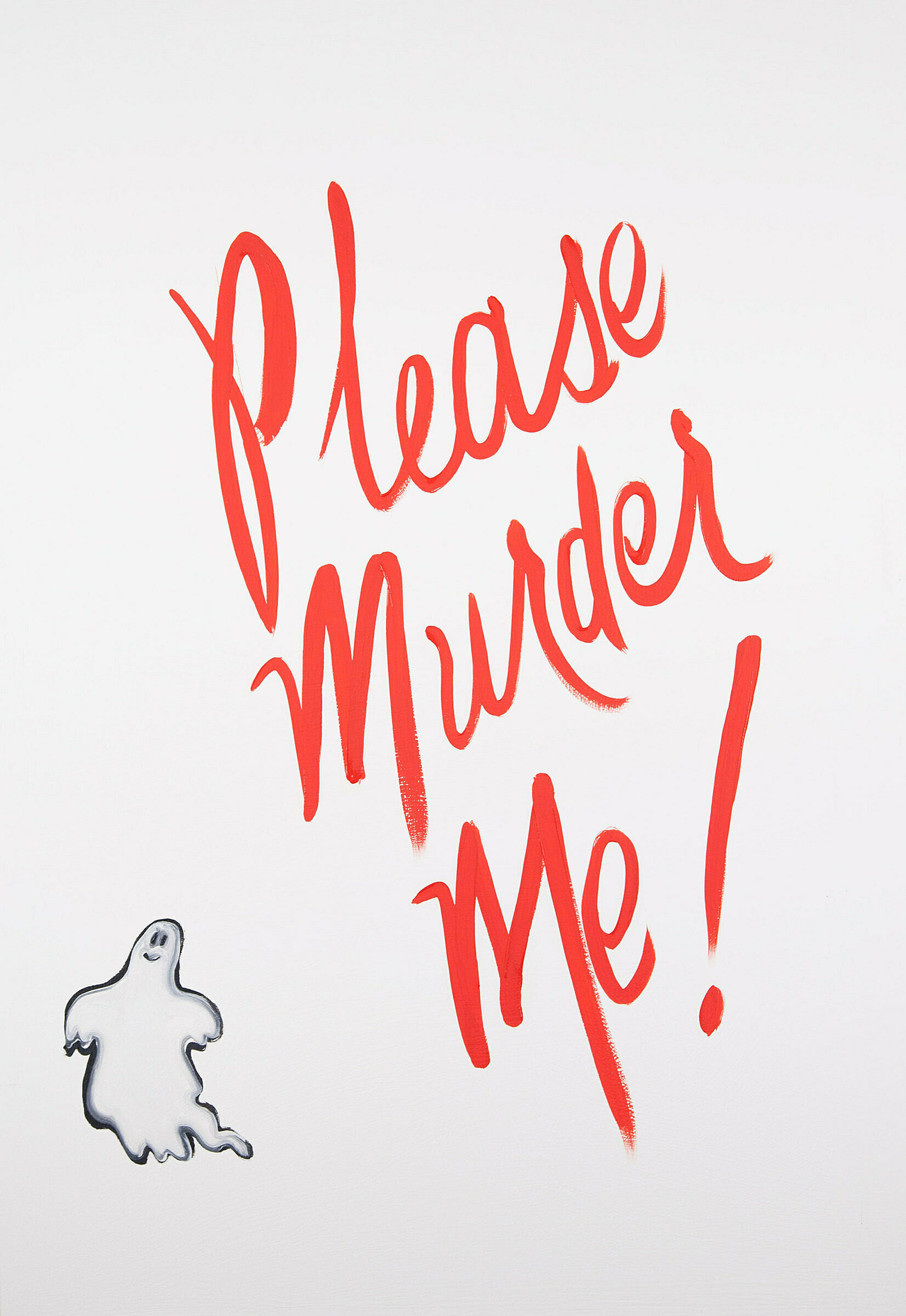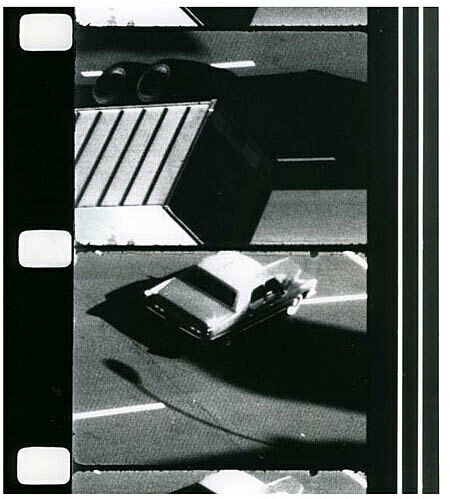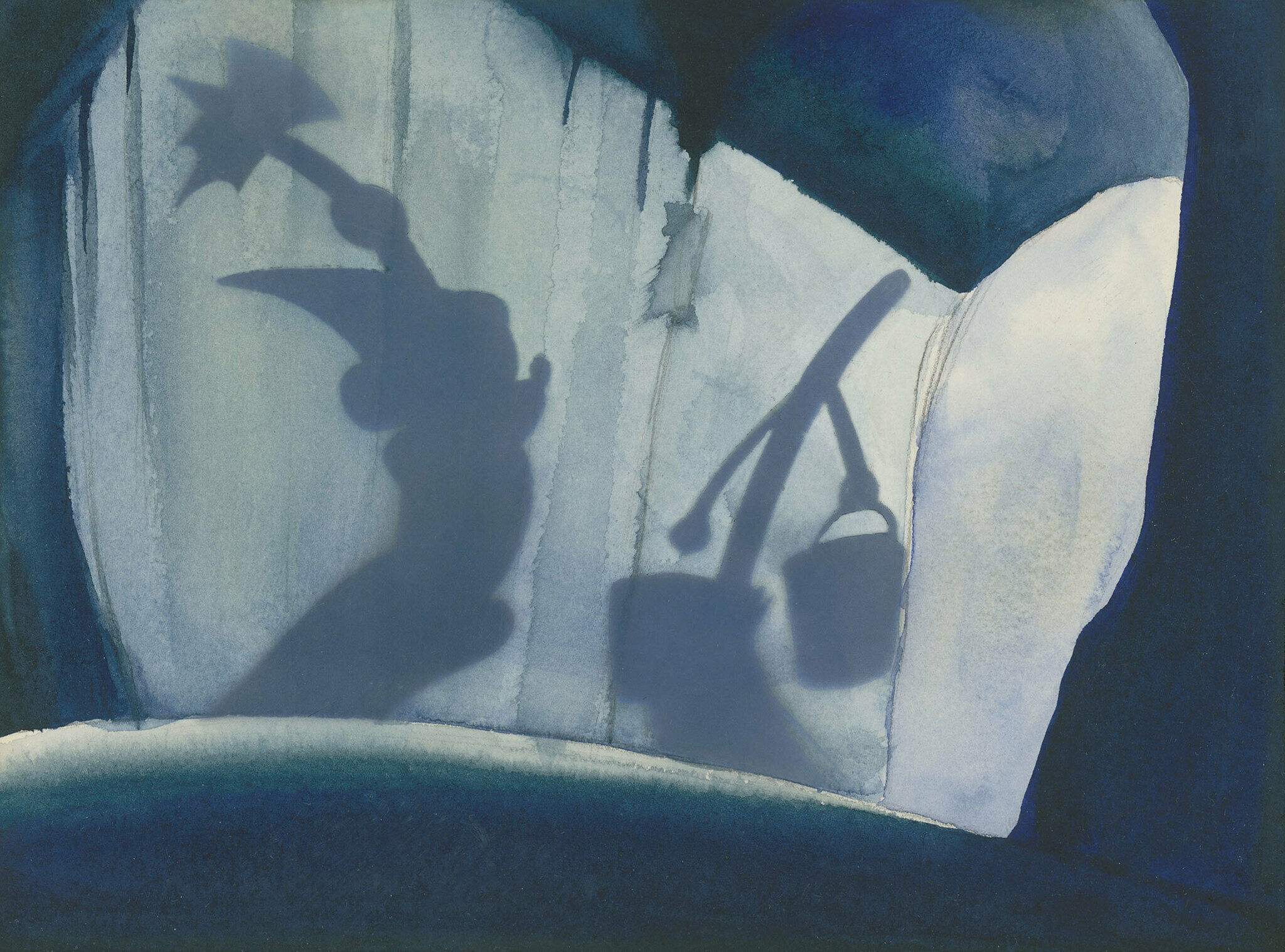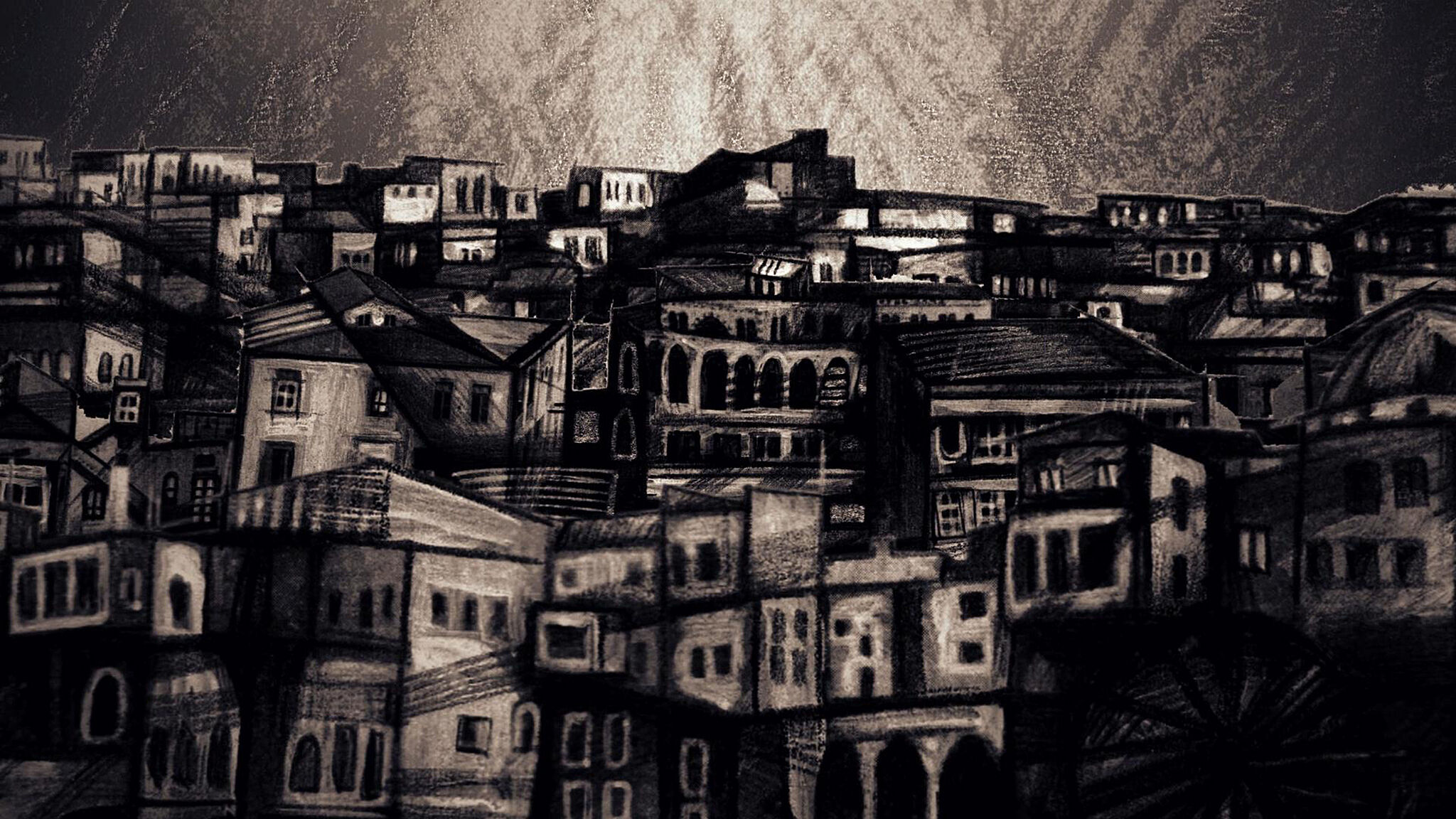Dreamlands
Screenings and Programs
Part of the exhibition Dreamlands, this screening series highlights a range of cinematic approaches from optical abstraction to science fiction. The works included challenge the notion of film as a fixed medium, as artists project into the future, document the past, disrupt the canon, and explore the limits of our senses.
Screenings will take place in the Whitney's third-floor Susan and John Hess Family Gallery and Theater, and at Microscope Gallery in Brooklyn. A series of public performances, talks, lectures, and workshops will also begin in January 2017. Please check individual listings for information.
Outer Space
Outer Space brings together a group of films whose cosmological spectacle and other-worldly beauty immerses the viewer in sensations of what outer space might look and feel like. The program includes Black Hole cinema, an expanded cinema event that interprets everything that emits light, from photons to stars and galaxies, as projections.
Ways of seeing
In this program, each work dismantles our sense of what constitutes the real, using color filters, 3D, optical printing, special effects and layered space to explore optical, psychological and emotional perception.
Afrofuturism: Black Science Fiction
Young women filmmakers from the African diaspora use time travel, technology, and ancient African mythology to explore alternative models of the future.
Please Murder Me! Readings on Noir
Four writers and artists read their recent writing, on noir—an elusive mood, literary, cinematic, fatalist, dystopian, psychologically expressive, melodramatic, morally ambiguous, and always just out of reach.
Pain revisited
The works in this program combine fiction and documentary realism to investigate African and African American experience, asserting resistance to traditional notions of race, gender, labor, and power. Combining hand-drawn imagery, found photographs, footage of slavery, anti-police brutality protests, field recordings of rural West African garment production and an American 1960s Black Panther rally, the filmmakers refuse marginalization, silence and absence, powerfully answering Tony Cokes’ question “how do people make history under conditions pre-established to dissuade them from intervening in it?”
Optical space
Abstract film emerged at the beginning of the twentieth century as artists sought to escape the constraints of the visible and create non-representational forms in painting, sculpture, and the moving image. This program brings together works by the Abstract Film movement working in Berlin in the 1920s, whose abstract forms, made using cardboard, dyes, paint on glass, and paper, were animated into optical metaphors of the rhythm, meter and tone of music. The second group of works presents abstract experiments with the screen by artists who emerged in the latter half of the century, in works that shift our vision outwards from the screen into the space of the cinema and the outside world.
WATER AND POWER AND SEEKING THE MONKEY KING
Two of the most important figures in the history of avant-garde film are brought together in this double bill. Pat O’Neill’s noir Water and Power uses superimposition, special effects, time-lapse shots and layered imagery to tell a science-fiction inflected story set in the near future, of the struggle for water in a dystopic desert created by Los Angeles’ vast water consumption.
Ken Jacobs’ abstract digital animation draws the viewer into an optical plane somewhere between two and three dimensions, created from crumpled foil tinted gold and blue, creating a crystalline space into which he inserts intertitles of searing political observations, echoing the accompanying mock-imperialist musical score by J.G. Thirwell. Jacobs’ epitaph for late Capitalism breaks through the patina of optical beauty to reveal a stark reality beneath.
CARABOSSE AND FANTASIA
Lawrence Jordan’s jewel-like blue-tinted animation film Carabosse is projected on a small white card sitting on a music stand in the center of the theater, with the soundtrack of Satie’s piano music filling the room. This contrast of scale between image and sound reverses the traditional hierarchy of cinema, and intensifies the film’s surreal, dreamlike quality, and its presence as an object.
This rare screening of Fantasia (1940) provides the opportunity to experience Disney’s classic concert film on the big screen with surround sound, immersing the viewer in color and music, and re-visiting the first thirteen presentations of the film using The Walt Disney Studios’ Fantasound, a unique multi-channel sound system specially invented in 1940 for the film.
BLADE RUNNER—AUTOENCODED
The artist and computer scientist Terence Broad built an autoencoder, a type of artificial neural network, and showed it the classic science fiction film Blade Runner (1982). He trained the autoencoder to remember every individual frame of the film and to reconstruct each one as a memory, on view here. In the original film, a bounty hunter hunts down androids that are so well engineered that they are indistinguishable from humans. Here, we face a similar challenge, as we trying to identify the original film within the AI’s program’s perception of it.
FEELINGS ARE FACTS: A NEURO-CINEMA
The cyborg has become a new paradigm for thinking about hybridity, expanded constructions of identity, and the boundary between the virtual and the real. These videos explore technology as an invasion of the body, an invisible power applying pressure to it, and a potent location for its transformation through feelings, physical gestures, empathy, and emotional release.
DISTANT WORDS
Two Iranian and Syrian filmmakers living outside their countries address their sense of isolation and injustice in hand-drawn animation and montage. Distant Words explores the isolation and loneliness of an outsider visiting his native country as a stranger. In Suleima, an animation documentary, a woman speaks for thousands of anonymous women in Syria through her activism and bravery.
DREAMS AND NIGHTMARES
These five animations and non-linear narratives form a kind of collective dream, or nightmare. Darren Bader’s animation questions the role of the artist and how the future might materialize as the United Nations General Assembly transports eleven sculptures into outer space. Jacky Connelly’s film, produced entirely in the life simulation computer game The Sims 3, explores a rural-suburban virtual world in looping tableaux of isolation and alienation. Keren Cytter’s fractured existential drama mutates and unfolds in 3D. In Andrew Norman Wilson’s hyper-real animation, the camera moves through an abandoned children’s psychiatric ward and an uncertain place in which the mosquito, a syringe and an oil derrick imply an unknown and sinister threat. Pieter Schoolwerth and Alexandra Lerman’s episodic narrative traces the story of a character who appears only as a shadow, invisible, a vacuum sucked out of the picture.
THE COLOR OF LIGHT
An optical immersion in color and light by artists engaging in the material, sensory and optical qualities of film, painting directly onto celluloid, layering images, and multiple exposures, covering film leader in liquids, scratching, stomping, drawing on and chemically altering the film’s surface, and shifting back and forth between the real world and its vibrant kaleidoscopic abstraction.
DEATH IS GREEN
The films in this program explore the arc of the natural world’s evolution from the primeval environment to the Anthropocene. Animated Hollywood dinosaurs, fossil traders and scientists try to reconstruct the plot of natural history. Black ice and storms threaten imminent collapse. Film buried then excavated from a landfill, images created from decomposition, and abandoned technologies turn dig sites into crime scenes.

